Day Trip to Nazareth and Galilee
Greetings readers! I’m Sarah Mann, writer, editor, and travel blogger and today I’m on the road, once more, with Bein Harim Tourism. They’re a family-owned and family-run travel company that organizes all kinds of tour packages in Israel, not to mention plenty of day trips around the country too.
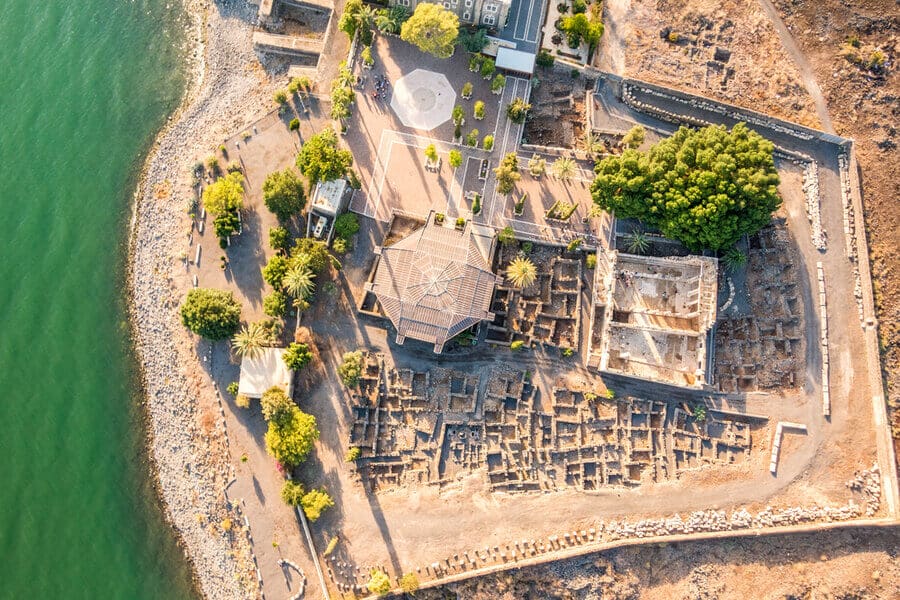
Capernaum, aerial view. Photo credit: © Shutterstock
Whilst I write often on their blog (which is a great read, by the way, and you can find it here) I’m a bit of a novice when it comes to group travel since I’m usually on the road solo. But there’s nothing wrong with taking a day trip and - actually - if you don’t have a driver’s license, feel nervous about renting a car in Israel, want to learn more with a professional guide, or simply want to meet new people, this is the chance to do it.
Today, I’m giving you the rundown on Bein Harim’s day trip to Nazareth and Galilee, which is the perfect way to get a taste of Israel’s north, not to mention the opportunity to see extraordinary historical sites. People often ask us what to expect on our day trips and it’s a good question. Since I’ve never been on this particular tour before, I arrived at the pick-up point with an open mind…and here’s what I discovered…
Tel Aviv Pick-Up for Nazareth and Galilee Tour - 7 am
It’s an early start for us since it’s a reasonably long drive north but everyone seems in good spirits. We climb into our minibus (we’re a group of 12) and all start chatting to each other - it’s a mixed group, with half the participants from the USA (including two kids) and the other half from Latin America.
Luckily, our guide Yuval (“Call me Yuvvi”) is a whizz kid with languages - he’s trilingual (Hebrew, English, and Spanish) which means everyone’s happy (and also gets the chance to brush up on their second languages). He tells us to get comfortable and promises us a coffee stop before we reach Nazareth, so we can dose up on caffeine for the trip that lies before us.
Nazareth is approximately 105 km north of Tel Aviv, and with the coffee stop, it takes around two hours. We watch urban landscapes give way to fields of spring flowers and, luckily for us, it’s a glorious day, with almost no clouds in the sky. By the time we arrive at our destination, the sun is out!
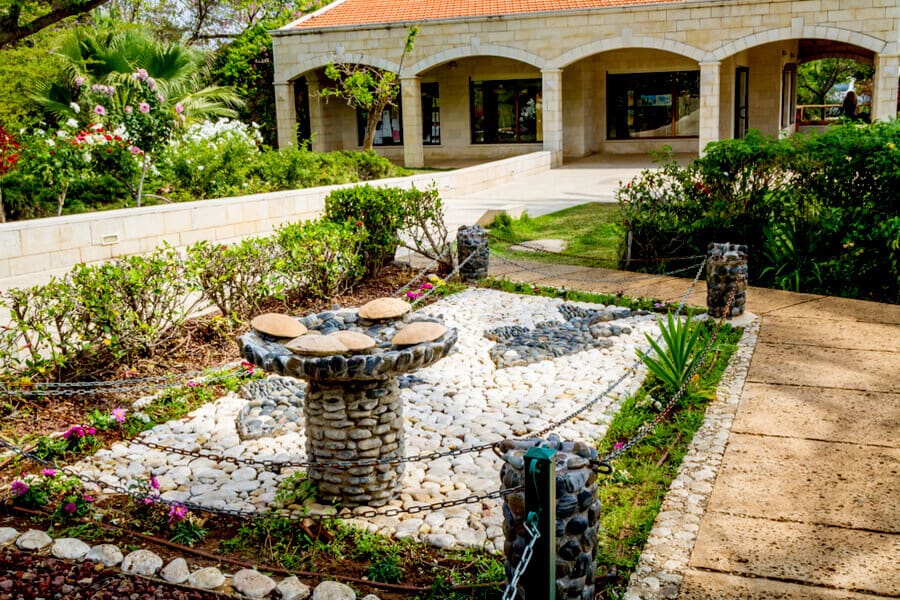
The Church of the Multiplication of the Loaves and Fish, Tabgha, Israel. Photo credit: © Shutterstock
Exploring Nazareth
Nazareth, as is well-known, is famous for being the city where Jesus spent his early years. Although he was born in Bethlehem, this is where his parents, Mary and Joseph, were from and it is where Jesus was raised, studied, and began attending Temple, astounding the Priests there with his knowledge. The central point of interest is, of course, the Church of Annunciation, the Catholic basilica where the Angel Gabriel appeared to Mary, telling her that she would conceive and bear the Son of God.
Tourism is picking up again in Israel but we’re in luck - there’s only one other group with us. We enter the courtyard and gaze at the beautiful artwork outside - there are many mosaics of the Madonna, all donated by Catholic communities from around the world (including one, poignantly, from Ukraine) and also a statue commemorating a Papal visit.
Inside, we see that the church is on two levels - the lower part is the holiest, being the cave where Mary was visited by an Angel. Inside there is an altar, on which is inscribed, in Latin, ‘Here the Word was made Flesh’. The first church here was built on the site in 427 CE and others have been built and destroyed since. This building, which is designed in a modern style, is one of the largest and most impressive churches in the Middle East.
The basilica takes our breath away. Almost 60 meters high, it is shaped like an inverted lily. Designed by the Italian architect Giovanni Muzio, it is decorated with indented dots, and, staring up at it, we realize why it dominates the Nazareth skyline. Glance down at the marble floor to read the names of Popes over the centuries and don’t miss the large mosaic portraying Jesus, the Virgin Mary, and St. Peter.
We then make the short walk to the Church of St. Joseph, where Joseph had his carpentry workshop - in contrast to our first stop, it’s a modest, humble building, run by the Franciscans and was erected in 1914, over the remains of a Crusader church. Walking back to the bus, we stop at a fruit stand nearby, for some pomegranate juice (it’s freshly squeezed and delicious) then it’s onwards and upwards, to our next destination - the Sea of Galilee.
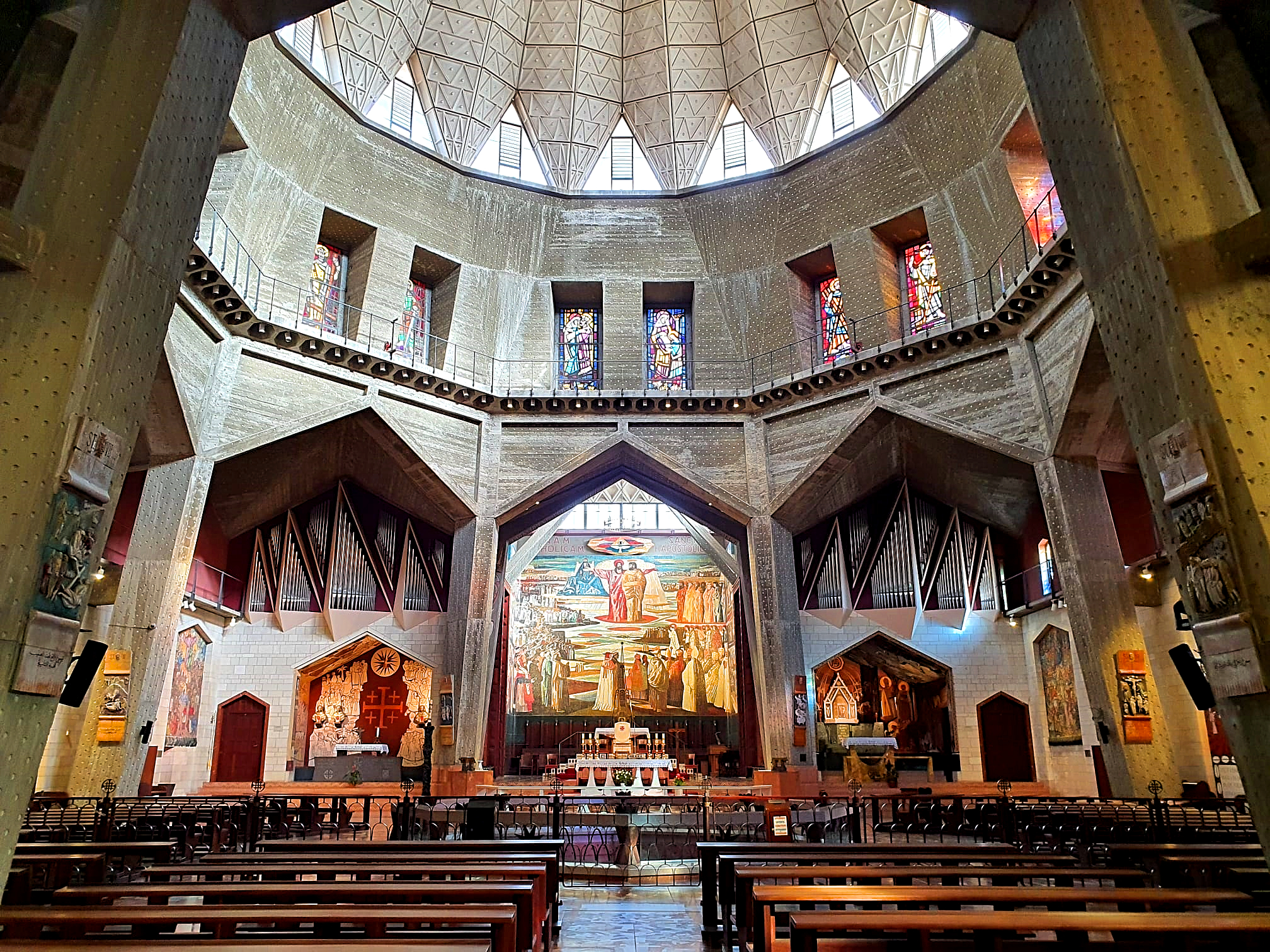
Inside the Annunciation Church, Nazareth. Photo credit: © Oksana Mats
Onwards to Galilee
It’s a beautiful drive, with all the flowers in bloom - particularly the cyclamen - and as we continue we pass Cana, where Jesus performed the miracle of turning water into wine. Before we know it, we have a fantastic view not just over the Sea of Galilee (or ‘Kinneret’ as it’s known in Hebrew) but also of Mount Hermon in the Golan Heights. We’ve really hit the jackpot in terms of weather…and it’s a stunning sight.
The next stop is Yardenit, Israel’s official baptismal site, where Christian pilgrims come from around the globe to be immersed and ‘born again’ in the waters of the River Jordan. This isn’t actually the spot Jesus was baptized by John the Baptist - that is down near Jericho in Qasr al Yahud - but it’s set up nicely with a lovely entrance, where the Lord’s Prayer is written in an array of languages.
Inside, it’s incredibly tranquil, with Jordan’s waters clear and green. Normally, Yardenit welcomes around 400,000 visitors each year and - at peak time - can be packed but because of Corona, it’s a lot quieter. However, we’re in luck - a group of pilgrims from Brazil is down at the water’s edge, dancing, singing, and being immersed, one by one, by their Priest, and it’s a moving sight, watching it all.
For any Christian, being able to partake in a baptism ceremony here is the opportunity of a lifetime and Yardenit obliges, offering white garments for rent and plenty of space for people to stand, sit or wade into the water. Whilst it’s definitely more commercial than the site down by Jericho, it’s well-organized, with clean facilities, a gift store, and even a restaurant. It really is a beautiful spot and we’re all happy to spend 45 minutes there.
And now it’s lunchtime - and we head off to a local restaurant, offering classic Middle Eastern fare - either fish, chicken, or a kebab, with plenty of mezze (salads and dips) to enjoy too. We all chat about our reasons for visiting (or in my case living in) Israel and it seems everyone’s having a wonderful vacation in the Holy Land, even the kids (who got a week off school in the US to come here but are learning plenty!). It’s not a long, leisurely affair though because there’s much more to see…after all, this is where much of Jesus’ ministry took place.
St. Joseph's Church Franciscan Roman Catholic church in the Old City of Nazareth. Photo credit: © Oksana Mats
Tabgha and CapernaumWe drive through the regional capital, Tiberias (located on the water’s edge) but don’t stop - we’re heading to the Church of the Multiplication, in Tabgha, on the northwestern shore of the Galilee, the spot where Jesus performed another of his miracles, turning two fishes and five loaves of bread into enough food to feed a crowd of 5,000.
The church is maintained by a Benedictine order and rests on the sight where a Byzantine church was erected in the 4th century. It’s a simple and modest structure, constructed out of limestone with black basalt walls. Inside, we’re all captivated by intricate floor mosaics, actually the earliest examples of Christian art in the region. All of them relate to plants and animals found in Galilee, save for a lotus flower. At the altar, there is one more, showing two fish and a basket of bread.
Yuval, our ever-knowledgeable guide, fills us in on the history of the area and points out a large stone structure in the courtyard, asking us what we think it is. My guess is closest - I think it’s a wine press. In fact, it’s an olive oil press. Olive oil is what made this community wealthy - used for lighting, soap-making, anointing, cooking and as a medical remedy, you can’t underestimate the importance of the olive trees in this area…
Our last stop of the day is to another church, close by in what was once the ancient village of Capernaum. Rediscovered in 1838, it was restored by Franciscan monks, and today it’s known as the ‘House of Peter’. According to Christian tradition, this is where Jesus appeared to his disciples, after being resurrected, as well as appointing Peter as head of this new movement.
In fact, it is a compound of three different churches - the Insula Sacra (circa the time of Jesus), Domus Ecclesia (4th century), and the Octagonal Church (5th century). Its location is beautiful - adjacent to the shores of the Sea of Galilee it affords us perfect views across the water. At its entrance, Yuval points out the statue of St. Peter, holding keys (symbolizing the keys to the Kingdom of Heaven) and as we walk inside the building, we notice the stand-architectural feat.
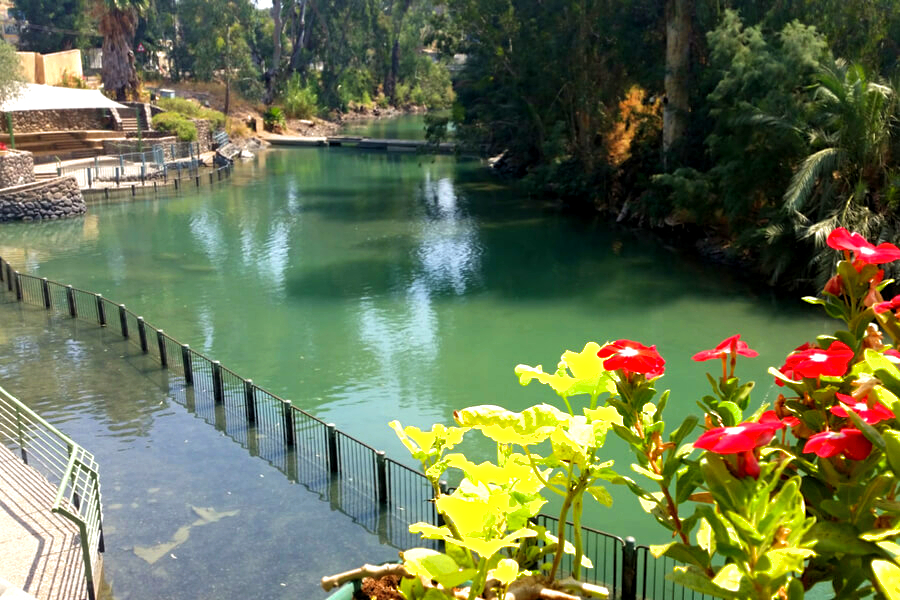
Yardenit baptismal site, Israel. Photo credit: © Shutterstock
The church has been built above the ruins of what is thought to be the centuries-old home of St. Peter. Yes, this is truly a futuristic design - as you look down, you see what was his dwelling, through a glass floor! Now, this really is walking in the footsteps of Jesus and his disciples!Peter’s house, moreover, pre-dates the Constantine era and is the earliest known example of a house/church in the area. Beneath the large glass windows are sculpted icons with scenes from Christian history - including a tabernacle, wooden panels depicting the Virgin and Peter on a boat, and an altar mosaic showing the miracle of the loaves and fishes and the manna was sent by God to the Israelites, whilst they wandered in the desert.
Adjacent to the house under the glass floor are the ruins of the synagogue that Jesus himself attended. It was clearly an impressive structure in its day, built of white limestone blocks hewn from the surrounding Galilee. Built on a platform above the houses in the town of its time, its southern facade was decorated, and - of course - it faced Jerusalem since this was (and remains) the direction in which all Jews pray.
As I wander around, listening to Yuval captivating me and the rest of the group with all kinds of interesting stories, I try to imagine the courtyard, entrance porch, and staircase that led to the synagogue itself. The prayer area was divided by a row of columns, creating three aisles, and the columns were on high pedestals, with Corinthian capitals. As I shut my eyes, the years fall away…I am transported back to the time of the Bible.
Yuval points out engraved motifs - animals (eagles and lions) as well as Jewish motifs such as a seven-branched menorah (today one of the national symbols of Israel and found on every citizen’s passport), bunches of grapes, pomegranates, and what is thought to be the Ark of the Covenant.
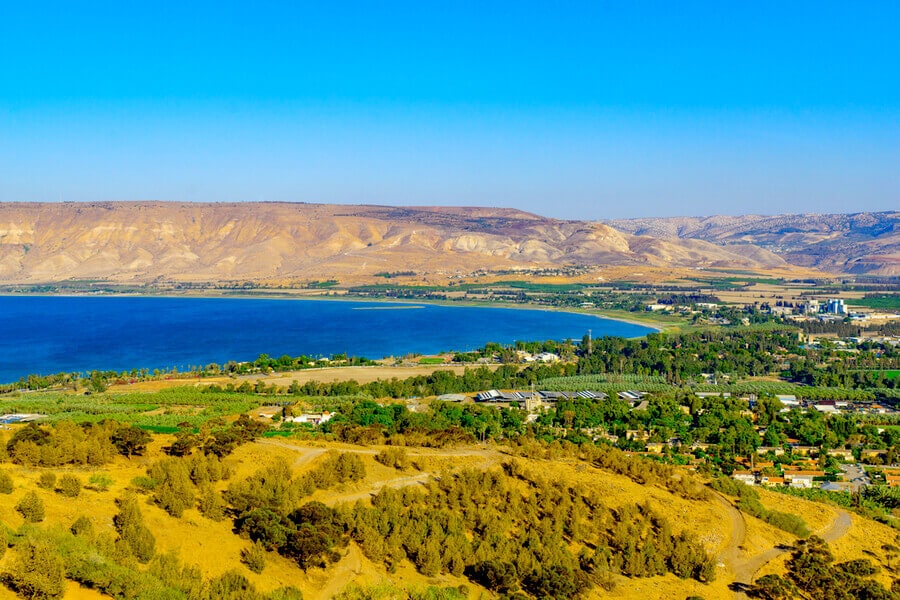
Sea of Galilee (Kinneret), Israel. Photo credit: © Shutterstock
There are also geometric motifs - stars, pentagons, hexagons, and even tiny rosettes! Finally, he takes us to an area where archaeologists made a fine discovery - evidence that children played games when they were tired of the rabbi’s sermons in the form of ‘tic-tac-toe' engravings in the stone! This is the kind of thing that makes you glad you’re with a guide - their knowledge and passion for the job can really bring this kind of site to life.There’s also time just to sit by the water, in quiet contemplation, looking out over the Sea of Galilee, and hearing the waves lap against the shore. It’s incredibly peaceful and light-years away from the hustle and bustle of Tel Aviv. I think some of us would truly like to stay longer, up here in the north, but time is marching on, the sun is fading and our day is drawing to a close.
It’s been another great day out with Bein Harim - my first ‘day tour’ experience was down in Masada and the Dead Sea, last November. This time, I’ve swapped the desert for green hills and floating in the Dead Sea for views of the Golan Heights, but the fact is that this tour held its own, and everyone’s talking about how much they’ve enjoyed themselves.
We drive back to Tel Aviv, talking amongst ourselves, swapping phone numbers, and I can’t help thinking to myself that we’ve packed an awful lot into today’s trip. We’re all tired, and our feet ache (I’ve just checked my fitness app, and I’ve clocked up over 13,400 steps today) but no one’s complaining. This is one day out no one will forget in a while.
If you are interested in Christian day tours or Christian Tour Packages in Israel, feel free to contact Bein Harim's office.
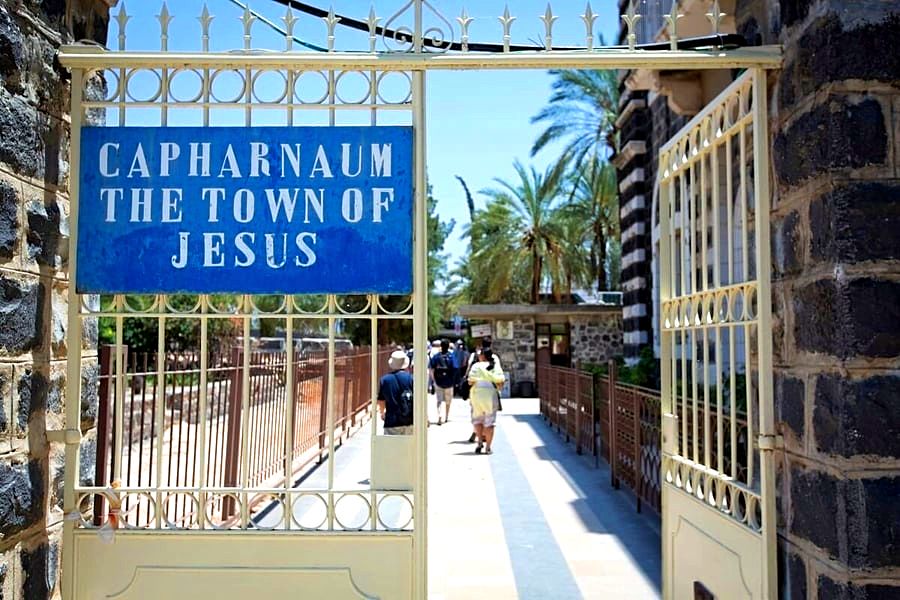
Entrance to Capernaum biblical site, Israel. Photo credit: © Shutterstock
 Login / Register
Login / Register
 Contact Us
Contact Us
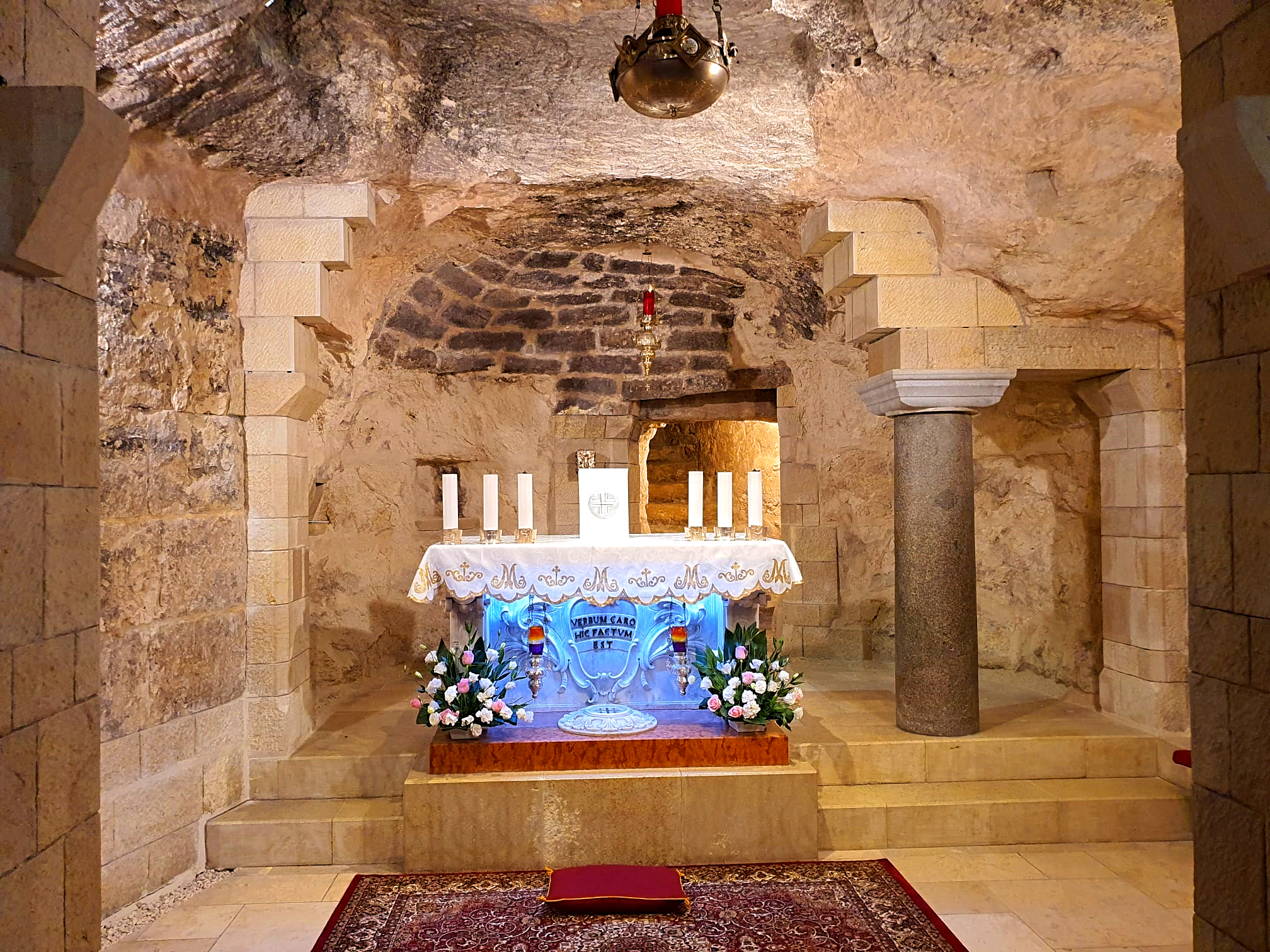
 Certificate of Excellence
Certificate of Excellence Guaranteed Departure
Guaranteed Departure Low Prices Guaranteed
Low Prices Guaranteed 24/7 Support
24/7 Support




